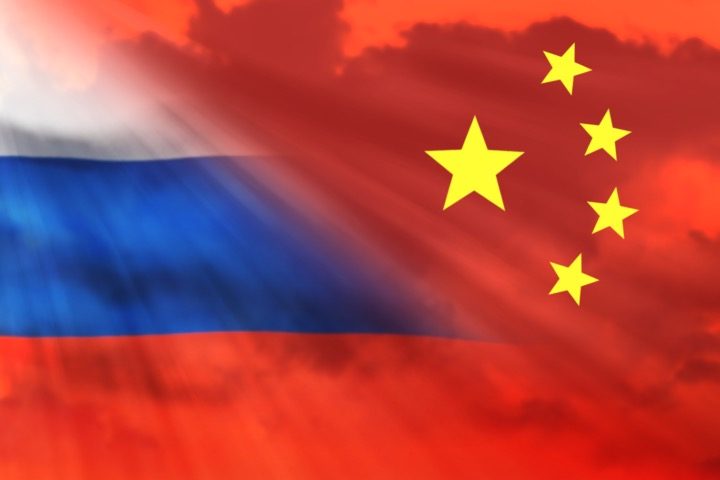
Moscow and Beijing continue to make major strides in their technological capabilities that are putting the West on alert.
On the Ukrainian front, Russia this month reportedly deployed its new ship-launched hypersonic 3M22 Zircon missile against Ukrainian forces.
Asia Times, citing reports from Ukrainian media, notes that the Kiev Scientific Research Institute for Forensic Examinations (KNDISE) claims its analysis of missile fragments indicates Russia indeed fired the Zircon. Russia itself has neither affirmed nor denied the weapon’s alleged use.
The Zircon missile falls within the Russian arsenal of “superweapons” revealed in March 2018. These weapons are specifically engineered to penetrate evolving U.S. missile defense systems, aiming to enhance Russia’s leverage in strategic arms negotiations with the United States.
In a September 2021 report, Chatham House referred to the Zircon as a dual-capable system capable of hitting critical targets on both land and sea. The report also described the missile as operating in two phases.
Asia Times reports that, for the first part of its flight, the Zircon (from the point of launch to an exoatmospheric altitude) uses a solid fuel booster and follows a “skip-glide” trajectory to its target. Then, the missile’s detachable warhead, powered by a scramjet engine, separates and approaches the target at terminal velocity until impact.
The inaugural flight test of the Zircon missile took place in 2015, and it achieved operational status by 2022. Russia conducted tests of the missile from two warships, namely the Admiral Gorshkov frigate and the Severodvinsk submarine, before deploying it on the frigate in January 2023.
Some observers note, however, that neither of those two warships is positioned in the Black Sea, and it would be atypical for the missile’s inaugural live combat launch to occur from a ship where it has not been previously tested.
Nevertheless, if it was, it would signify a major advancement in Russia’s strategic bombing campaign, of which the goal is to destroy important Ukrainian infrastructure and weaken the country’s morale.
Russia has employed hypersonic missiles in previous engagements with Ukraine, such as the air-launched 9-S-7760 Kinzhal, which targeted Ukraine’s Patriot missile system supplied by the United States.
Asia Times further reports that America’s military capabilities are now lagging behind Russia and China’s in certain respects:
… Hypersonic weapons such as the Zircon are the latest iteration of evolution and counter-evolution between missile-centric Russian forces and Western navies, with the former’s submarine-launched hypersonic weapons such as the Zircon underscoring the need for improved anti-submarine warfare (ASW) capabilities by the latter.
However, US ASW capabilities have atrophied since the Cold War and have failed to keep pace with improvements in Russian and Chinese submarine capabilities.
In an April 2021 article for Proceedings, Walker Mills and other writers say that the US Navy’s P-3 Orion ASW aircraft, used during the Cold War, had dwindled to just 137 by 2010, with the last active-duty squadron retiring in 2019.
Moreover, these writers also highlight concerns about the diminished ASW capabilities of the U.S. surface fleet, attributing it to distractions and a decline in warfighting proficiency. This decline is partly attributed to the decommissioning of the last frigates in the U.S. Navy over five years ago. Additionally, the littoral combat ships’ ASW mission modules have faced challenges in meeting the platform’s stringent weight requirements.
China is also making big technological gains — and not only in the sphere of military technology.
As seen in Asia Times, China’s leading firms in computer chip design and manufacturing, HiSilicon and Semiconductor Manufacturing International Corporation (SMIC), are turning heads in Washington.
Once upon a time, SMIC was looked down upon by the industry, lagging far behind its competitors despite the billions of dollars the Chinese government injected into the company. But things have now changed drastically.
In August 2023, Huawei introduced its advanced Huawei Mate 60 smartphone. The Center for Strategic and International Studies, a Washington, D.C.-based think tank, noted that the launch was a noteworthy advancement, signaling that Chinese self-sufficiency in HiSilicon’s semiconductor design and SMIC’s manufacturing capabilities were rapidly approaching a concerning level.
Then there’s the news that Huawei and SMIC have plans to mass-produce 5-nanometer processor chips in newly established production facilities in Shanghai. Word of this development has heightened concerns about significant advancements in China’s next-generation capabilities.
In short, America for years remained at the vanguard of chip design and fought to ensure its allies, such as Taiwan, were the primary sources for manufacturing cutting-edge chips. However, Beijing has proven itself a worthy competitor and its technological progress holds significant implications.
Asia Times describes some of the measures the U.S. government has taken to try to reduce the impact of China’s growing chip industry:
The US government has called on its friends to adopt a unified stance around excluding chip exports to China. Notably, ASML, a leading Dutch designer, has halted shipments of its hi-tech chips to China on account of US policy.
Washington has also limited talent flows to the Chinese semiconductor industry. The regulations to limit the movements of talent are motivated by the observation that even “godfathers” of semiconductor manufacturing in Japan, Korea and Taiwan went on to work for Chinese chipmakers — taking their know-how and connections with them.
… Finally, the US government has explicitly targeted China’s national champion firms: Huawei and SMIC. It banned the sale and import of equipment from Huawei in 2019 and has imposed sanctions on SMIC since 2020.
Whereas the United States once believed itself to be untouchable, reassured by the vast superiority of its industry and military prowess, Russia and China together are giving Washington cause for worry. As its technological advantage diminishes, America is increasingly finding its superpower status threatened by these rival states.



